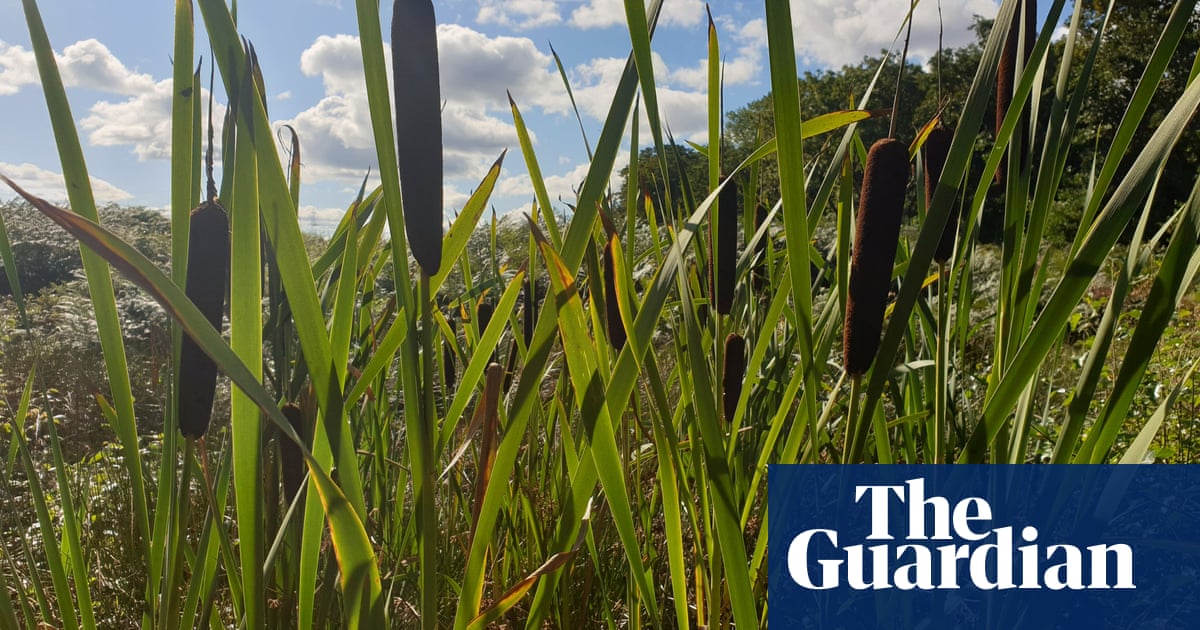“I really don’t like the word ‘paludiculture’ – most people have no idea what it means,” Sarah Johnson says. “I prefer the term ‘wetter farming’.”
The word might be baffling, but the concept is simple:paludicultureis the use of wet peatlands for agriculture, a practice that goes back centuries in the UK, including growing reeds for thatching roofs.
“There would have previously been a lot more vast, wetter, boggier areas of peatlands and fens, especially in north-west England and other regions,” says Johnson, the head of peatland nature recovery at theLancashireWildlife Trust (LWT). But over the last few hundred years, she adds, those have been converted “into what we know today as conventional drainage-based farming, or for development, or from peat extraction”. In the past British farmers were even paid by the government to drain peatland for agricultural use, especially after the second world war.
The UK is now recognising, far too belatedly, how precious those habitats are. “When peatlands are still wet they are a massive store of carbon, but as soon as you drain them that CO2is going back into the atmosphere,” says Johnson. More than80% of the UK’s peatlands are damaged or degradedand most lowland peat has been drained and converted to agriculture, at a cost to the environment.
“Some of the biggest emissions from farming are from agricultural peat soils,” says Johnson. “Three per cent of theUK’s greenhouse gas emissions come just from drained lowland agricultural peat– it’s a really small proportion of UK land that is making up a massive amount of our greenhouse gas emissions.”
This realisation is driving an international €10m (£8.4m) wetter farming project –Palus Demos– in which previously drained peatlands will be rewetted, with farmers helped to grow crops that thrive in boggier conditions. “It’s not about flooding the land and we’re not asking farmers to take land out of production,” Johnson stresses. “We restore the naturally higher water table to rehydrate the peat soils, but the land remains in agricultural use. We’re trying to find that win-win for the environment and farming.”
Demonstration sites are being developed around north-westEngland, in traditional peat-cutting areas in Ireland’s Midlands and outside Amsterdam in the Netherlands by partners including Natural England, LWT, the University of Amsterdam, Manchester Metropolitan University and others.
How does the project rewet the peatlands? “We use a series of measures, such as blocking existing drainage ditches, removing underground field drains and also by installing bunds, which are waterproof barriers made from compressed peat that run under and above ground and allow us to keep the water where we want it to be,” says Mike Longden, the peat programme technical lead at LWT. “We also use weirs and irrigation systems which allow us to move water where it’s needed.”
The crops being trialled include foods such as cabbage, blueberries, rhubarb and cranberries, and non-foods including bulrushes, which can be used as a building material and in textiles –Ponda, one of the project’s partners,has developed a process to turn their fluffy seedheads into a sustainable eco-textile used for filling padded jackets – and sphagnum moss, which can be used for horticultural compost.
Scalability will be crucial, with farmers and consumers unlikely to be keen on higher production costs or food prices. “Ideally, we want this to be 100% win-win,” says Johnson. “But this is a trial. We don’t know all the answers yet. Looking at the economics is really important. We’re looking at how to make wetter farming as profitable, if not more profitable, than current conventional, drainage-based farming.”
LWT is also exploring green finance options, including carbon-offset schemes such asWilder Carbonand theIUCN Peatland Code, andcountryside stewardship paymentsfrom the UK government’ssustainable farming incentive(SFI), which could pay for farming at a higher water table, though SFI has been paused.
Sign up toDown to Earth
The planet's most important stories. Get all the week's environment news - the good, the bad and the essential
after newsletter promotion
Farmers may find wet, boggy land harder to farm in the short term, making it more difficult to access land to sow crops, manage or harvest, says Johnson, but some were already struggling in certain areas with drained peat soils that had become unproductive. All the land being used for the LWT trials was coming out of production because it was difficult to farm. “It was making farmers no money so they had sort of given up on it,” says Johnson. “If rewetting is a way to bring land back into production, that can also help farmers.”
The Europe-wide Palus Demos project started in early 2025, with results expected in 2029. As well as crop yields, greenhouse gas emissions will be monitored to see how much carbon could be saved by converting land from drainage-based use to paludiculture. The results from LWT’sWinmarleigh carbon farmproject in west Lancashire have already shown an86% reduction in CO2emissionsjust from rewetting the peat.
LWT is now “actively engaged with Defra to consider what could be done differently on agricultural peat soils for farming benefits and environmental benefits”, says Johnson. “We are working with policymakers and engaging with the National Farmers’ Union and other farming groups.”
Rewetted peat soils could form part of a “mosaical landscape” alongside more conventional farming, Johnson suggests, in which “core conservation areas could be buffered by wetter farming areas that are still productive and bringing in income for farmers”.
If the trials are successful, paludiculture could be implemented more widely. “It would be amazing to see wetter farming rolled out across peatlands worldwide,” says Longden. “In the UK, we have large areas of drained agricultural peat in the north-west but also in East Anglia, the Somerset Levels, the north-east and beyond.
“There’s peat right across huge swathes of northernEurope, North America and even in the Tropics. In all these areas, there will be possibilities for wetter farming.”
